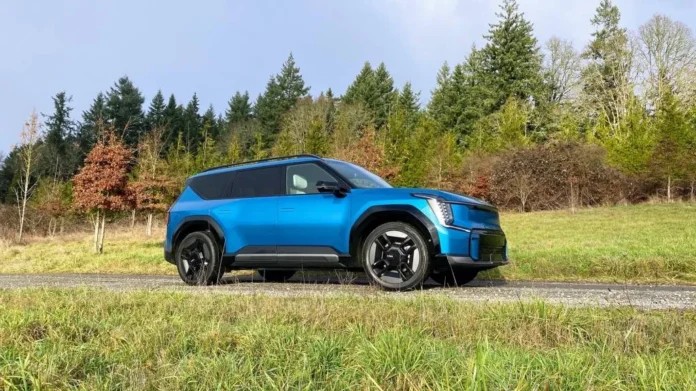Many of the world’s largest cement manufacturers, such as Cemex, Heidelberg Materials, and Holcim, are working on these options, in some cases with government support. But it’s far from clear whether carbon capture and storage is a technically and financially viable option for an industry that competes globally on very tight profit margins.
Meanwhile, a variety of startups and government- and university-backed researchers are working on new low-carbon methods that could replace the centuries-old cement-making process.
Startups like Brimstone Energy replace limestone with other minerals that don’t have carbon. An approach being pursued by startups such as Sublime Systems is to replace high-temperature kilns with electricity-powered cement production methods. Both of these companies recently won DOE grants to build commercial-scale production facilities as part of a series of industrial-decarbonization awards that also included grants for carbon capture, alternative fuels, and supplementary cement material production.
The challenge with these alternative pathways is that they will require cement producers to change how they source their precursor materials or rebuild production facilities at the billion-dollar scale of today’s cement plants, Gilliam said. Though Fortera is pursuing a novel process, its model “is leveraging as much of the existing feedstocks and capital infrastructure that we can,” he said.
And while Fortera’s process does require cement manufacturers to invest in the firm’s carbon-capture technology, Gillam claims those costs can be recovered through the increased production capacity achieved by embedding that carbon into its finished product. That’s in contrast to conventional carbon capture and storage, where “you’re adding all that capital cost and pumping it underground for no value.”
Fortera isn’t alone in taking this approach. Companies such as CarbonCure, CarbonBuilt, and Solidia inject CO2 into concrete as it’s poured or formed into precast shapes. Startup Carbon Upcycling is chemically activating coal power plants’ fly ash and steel mills’ slag, two commonly used cement supplements, to bind with CO2 that’s captured at cement manufacturing sites.
From test pours to mass markets
Another key barrier for novel low-carbon cement startups is getting buyers to embrace changes to a safe and reliable recipe that’s been in use since the 1800s. New products in the cement and concrete world can take up to or more than a decade to move from initial tests to wider adoption, per DOE’s report from last year.
On that front, Fortera has won a vote of confidence from ASTM International, a key standards body, Gilliam said. Earlier this summer, ASTM published guidance affirming that mineralized calcium carbonate of the type Fortera produces is acceptable along with natural limestone as an input into the cement it certifies.
“ASTM has 160 members, and you have to get a unanimous vote” for standards changes of this type, he said. “That was credibility in the concrete world seeing us test our product.”
Standards certifications of this kind are only a first step in convincing the ready-mix concrete providers, construction companies, and government agencies that make up the biggest users of cement that they should buy a newly introduced product.
Fortera expects to announce in the next month or two the first commercial buyers of its ReAct product from its Redding facility. The startup is working to establish commercial relationships with concrete ready-mix companies in Northern California and is working with as yet undisclosed construction partners “to validate the product” in planned real-world projects, he said.
To start, Fortera’s cement shipments are likely to be used in concrete for sidewalks, floors, and other nonstructural purposes, he said. That’s a typical way to test novel cement and concrete formulations.
Last year, Fortera announced plans to mix its ReAct product into standard cement at 15 percent blends — a relatively common approach from makers of novel cement.
But Fortera expects to increase the proportion of its product that goes into the cement mixes it will deploy with its partners, Gilliam said.
“The holy grail for us was always to go to 100 percent material,” Gilliam said, since higher percentages of a lower-carbon product can yield greater overall carbon reductions per ton of product sold.
With the nod from ASTM, “we’ve shown our 100 percent material can get to performances similar to Portland cement at room temperature,” he said. “Roughly half the material coming out of Redding is going to go toward 100 percent use cases … that’s really getting pull from the market.”
Source link by Canary Media
Author Jeff St. John
#Fortera #lands #85M #scale #lowcarbon #cement





